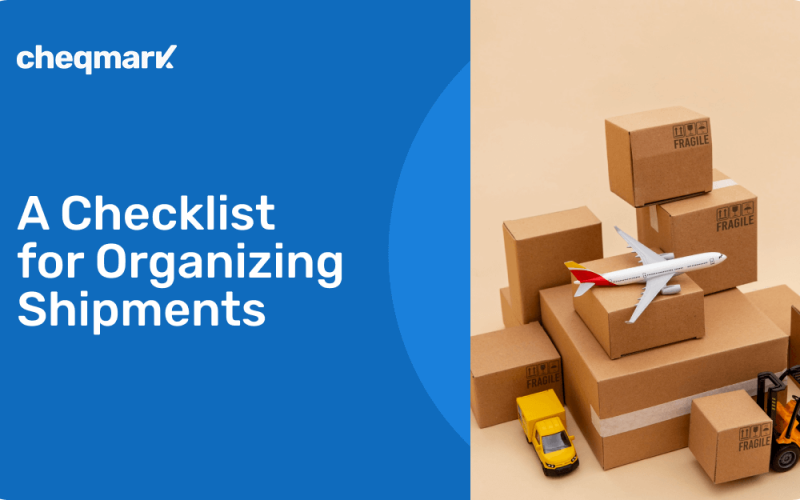Organizing shipments is a fundamental component of modern company. It entails not only efficient delivery of commodities. It is also attention to detail, accuracy, and adherence to all regulatory standards. You may face a lot of problems if you don’t know how to organize your shipments properly. From delays and additional costs to potential legal issues. Read on for a complete checklist for organizing shipments to ensure efficiency, accuracy, and compliance with all necessary standards.
Key Stages of Organizing Shipments
There are several key stages in the organization of shipments. Each of them has its own characteristics and requirements. We will now discuss them.

Image Source: Depositphotos
However, at this stage, it is worth mentioning that in the modern realities of organizing shipments, it is crucial to use the latest tools. The ones that will automate and simplify processes. One of these solutions and tools we can safely call PackyApp. This platform is very helpful because it offers opportunities for tracking cargo without any effort or time. With the user-friendly interface of https://packyapp.com/ you can monitor and track parcels in real time from a wide variety of carriers. After all, PackyApp cooperates with more than 800 carriers worldwide. UPS, FedEx, DHL, USPS, Amazon Logistics, and more. Using Packy App, you can significantly increase your efficiency and your peace of mind. After all, you can track all your shipments hassle-free by simply entering the tracking number in the search bar.
As for the main stages of organizing shipments, they include:
- Shipment planning.
- Packaging.
- Documentation.
- Transportation.
- Delivery.
Prepare to ship
Before you start the shipping process, plan all the steps carefully. It is important that you consider all the details. A kind of shipping checklist should be your main tool at this stage. It should be a list of all the tasks and steps you need to complete before the goods leave the warehouse or production facility. So, take care of the following items.
- Check the goods for damage or defects.
- Estimate the quantities of goods to be shipped.
- Prepare the relevant documents. This may include invoices and quality certificates. Also, other relevant and necessary documentation.
- Check for compliance with carrier requirements.
Packing list shipping
Pay special attention to the packing list shipping. This is a detailed description of all the goods being shipped. It is an important document. It includes the details of each shipment. You need it for proper cargo handling at the stages of customs clearance and transportation. The packing list helps customs authorities, carriers, and consignees:
- to understand what exactly is contained in each shipment,
- to ensure the accuracy of cargo handling at the stages of customs clearance, transportation, and receipt.

Image Source: Depositphotos
This list includes information about:
- the number of units of goods,
- their packaging,
- dimensions,
- weight, etc.
So, what is a packing list in shipping? This document details all packaging units and the contents of each of them. This way, you can not only optimize logistics but also avoid delivery errors. It’s because every shipment will be properly recognized and sorted.
Goods quality. Packaging. Don’t forget to check
Before shipping, test the quality of parts before shipment. This checking will ensure that the goods meet customer requirements or quality standards.
By performing this check, you prevent situations where the goods do not meet the requirements or have defects. In any case, the reasons listed can lead to returns or customer problems.
Of course, the shipping packing list is a crucial step. It determines how efficiently and safely the goods will be delivered to their destination. However, choose the right materials for packaging. It is equally crucial. Therefore, be sure to consider:
- the type of goods,
- its dimensions,
- weight,
- sensitivity to external factors.
Documentation for shipment. Choose a carrier and vehicles
Proper documentation is no longer just a necessity. With it, you not only create smooth logistics, but also meet the requirements for customs procedures. Shipping log helps you track all stages of delivery. From the starting point to the end. It includes information about:
- the shipment,
- date of shipment,
- cargo number,
- other critical details.
This way, companies have a clear picture of the status of all shipments at any time.
Choosing a carrier and vehicle
If you want to deliver your goods efficiently, choose the right carrier and vehicles. Be sure to consider the following factors:
- type of cargo,
- delivery time,
- geographical features,
- tariffs.
How to arrange freight shipping is an issue. It requires a careful approach to choosing a carrier. Therefore, be sure to compare different transportation service providers. This way you can find the best option for your business. Before finalizing the shipment, it’s also a good idea to run through a truck inspection checklist – Fleetio breaks it down in a simple, practical way to make sure everything’s in order before hitting the road.
The importance of proper transportation
It is also important to know whether you need special transportation for delivery.
- Cold chain for sensitive goods.
- Specialized trucks for large heavy loads.

Image Source: Depositphotos
The main goal of the cold chain is to maintain the quality and safety of goods during transportation from the manufacturer to the end user. In medicine, drugs that require constant refrigeration (such as vaccines) are transported in special temperature-controlled containers to maintain their effectiveness until they are used.
Customs clearance and control
Customs procedures are always an integral part of international shipping.
Each item must be properly declared.
Some categories of goods may require additional certificates and permits. Keeping a detailed delivery log will help you keep all the records you may need for customs clearance. This will ensure a quick and smooth process of delivering the goods through customs control.
Track. Monitor. Completion
After the cargo has left the warehouse, it is essential to be able to track its movement. This allows you to reduce the risks of:
- delays,
- deviations from the route,
- lower quality of delivery.
Use maintenance and logistics tracking systems to get up-to-date information on the status of the delivery and respond to any problems in a timely manner.
Completion of delivery
Once the goods have been delivered, finalize the process. Check if the goods were delivered in good condition and meet the customer’s requirements. It’s also the time to update the shipping log. Capture the completion of the shipment and all important delivery details.
Summary
Organizing shipments is often a challenging, yet extremely important process for any business that transports goods. Proper planning. Strict adherence to packaging procedures. Quality control. Effective use of monitoring tools. Tracking. All of the above is the key to the successful implementation of this process. Considering all the aspects discussed in the article, you can create the right strategy for organizing shipments. Thus, you will ensure the success of your business at all stages of the logistics process.


